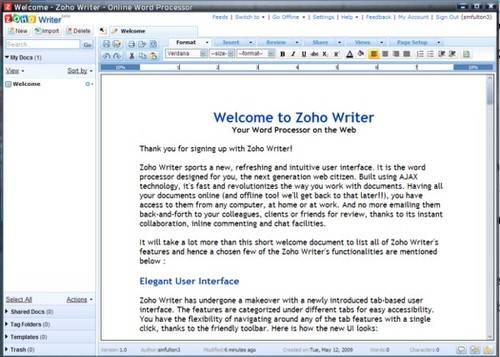The change in emphasis for HTML5 away from just content and more toward functionality, coupled with a much deeper impact from Apple on the broader model of computing than even Apple’s most adamant fans could have anticipated, has led to a changed scenario for the Web. By this time next year, barring any delays, the Web delivery model for the world’s three most prevalent platforms – Windows, iOS, and Android – will be based on apps.

This changes the landscape for developers like Mozilla and Opera Software, whose value propositions to date have been based around building better browsers: If the user now bypasses the browser icon and goes directly to an app, how does a browser maker convince customers that there’s value in swapping out the engines that run their apps – components which, like graphics cards, they probably never see or even care about?
It didn’t seem like a viable possibility even at this time last year, not with the rise of HTML5 in popularity, the increasing public sentiment against proprietary toolsets in Web development, the growing frustration with Web sites appearing differently for different browsers, and the surge in competition among the five leading browser manufacturers for performance. The browser seemed as critical to the ideal of the Web as it was to the delivery of the Web.
Ironically, the question of whether the browser’s presence as a window with an address bar and bookmarks in the delivery of Web functionality, was first explored by Mozilla in 2009. Prism was the organization’s first experiment with using Firefox’s JavaScript engine to interpret a Web site as an “app” with its own icon, and without the trappings of the browser window. Even though Prism 1.0 happened only three years ago, at first, users actually didn’t get the point.

A May 2009 test of Zoho Writer running as a Prism app.
What’s the difference between Prism and, say, a Silverlight or AIR app running outside the browser window? The answer – which at the time had to be explained meticulously – was that a Prism “app” would not have to defer to anyone else’s proprietary tools. It could be pure HTML and JavaScript – and if the Web were to rely on that, plug-in interpreters could be rendered unnecessary.
At this same time, back when Microsoft’s hopes were pinned to Silverlight, its value proposition was that running outside the browser was the only way a Web app could be made secure. “As far as we can see,” Bob Muglia (now at Juniper Networks) told me just over two years ago, “there will be a difference between the security context of running in a browser, and having a user make a decision to install (I use that word loosely) an application on their machine.”
Today, the situation has completely flip-flopped, with Silverlight now in stasis and now Adobe Flash perhaps headed that direction.
“Imagine Pandora without Flash,” I wrote as recently in September 2010, literally humming a John Lennon melody as I was typing. Now, of course, no one has to imagine.
You might think that Firefox would be the immediate benefactor. But suddenly the presence of the browser for apps delivery is looking more like a fifth wheel. Users of Windows 8 will find their “Metro-style” Web environment will be supplied by IE10, even when they replace their Desktop-based browser by something else. And even though it will be technically feasible to replace the Metro IE10 browser, assuming a Metro-style substitute ever comes into existence, the question for Web users will be the obvious, “Why?”
Although Prism, arguably, helped bring this situation about, users discovered Prism by first having installed Firefox. But as Firefox finds itself being eclipsed by Google Chrome for usage share, Mozilla and Opera find themselves having swapped places with Microsoft and Adobe. Now they’re facing the prospect of having to sell their principal products as a “secret sauce” that improves the Web, rather than the principal portal into the Web.
True to its nature, Mozilla’s strategy is to advance a kind of HTML5 apps ecosystem based around principles that Mozilla will continue to promote, and centered on an apps store that can be used completely outside of Firefox. Although Firefox will continue to be included in the loop, Mozilla’s approach may be its path to survival in a post-Firefox world.
“Firefox will provide the best browser-based runtime for applications,” reads the current edit of the organization’s wiki. “It will have the richest set of APIs, the best user experience of navigating and running applications, and the safest and easiest-to-use user controls. It communicates with the application cloud to keep the user’s application choices and data always up-to-date.”
That’s the second paragraph. The first paragraph keeps the temptation to leverage that platform advantage in check: “Web applications are universal applications. They run on any device. They use standard technology that works on desktop PCs, smartphones, and tablets. They can be installed on devices automatically when users authorize their devices, and are personalized so that users keep their preferences and data with them wherever they go.”
To that end, Mozilla is hoping that extending its existing cloud-based service from simple synchronization to all-out identity federation, will help keep its foot in the door while Microsoft and Google try to shut it. Last July, the organization proposed a concept called BrowserID, which federates multiple logins around one’s choice of e-mail addresses. Authentication takes place through messages sent to that address.
It’s far from an original concept, but then again, the more established competitors in the identity space don’t have original concepts either. A central portal for HTML5 apps to authenticate their user could give Mozilla a way to flag down potential Firefox users, the same way that Google’s home page has given it a very successful way (more so than anyone anticipated) to flag down potential Chrome users.
But as the Web “experience” becomes less and less about the browser and more about the app, Mozilla’s message of Firefox improving that experience will need to be tied to something different that the user can not only see but feel: performance, speed, and reliability. These are departments where the gaps between Firefox and its competition – not only Chrome but Opera as well – have only increased in the last two years. For an organization that insists on remaining true to its principles of openness and mutual respect among its competitors, it will be a very tough sell.










